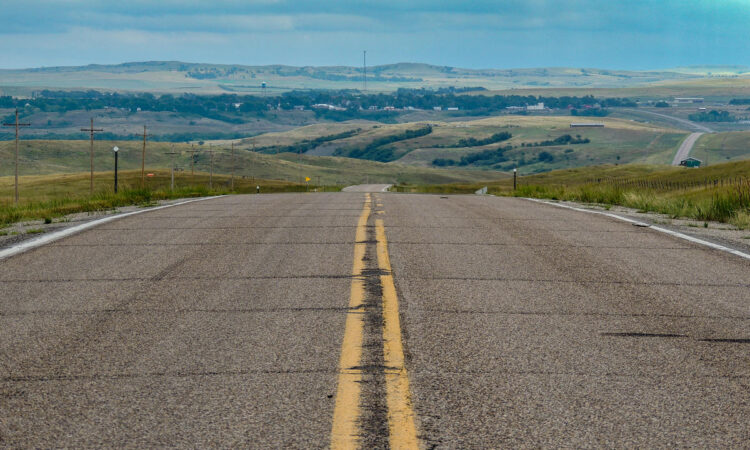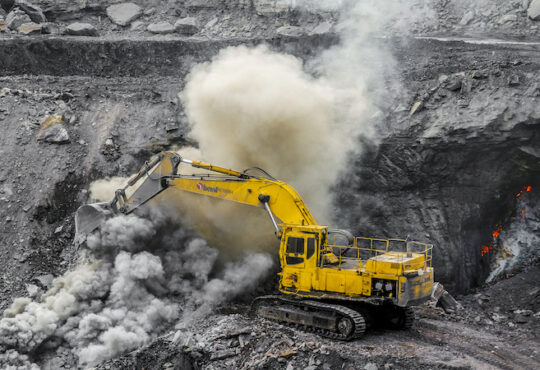
This is the second of a two-part blog post series on tribal road safety and infrastructure solutions by Tala Parker, 2022 Summer Schneider Fellow for Transportation at NRDC. Read the first article here.
Last year’s landmark bipartisan infrastructure law (sometimes referred to by its formal name, the Infrastructure Investment and Jobs Act) presents an opportunity for the United States to address root causes of the Indigenous traffic safety crisis at unprecedented scale. The infrastructure law authorizes historic funding levels to redesign unsafe roads and build new sidewalks, addressing some of the key causes of Indigenous traffic deaths. In doing so, implementing agencies at the local, state, and federal levels have an opportunity to take a step in the right direction toward rectifying one of many historic injustices, which have caused disproportionate harm in Indigenous communities—but they will face an uphill battle, due to shortcomings and missed opportunities in the legislation itself.
Our success in realizing this opportunity will depend on both how the infrastructure law is written and how implementing agencies use their discretion in implementing it. To assess the likely benefits for Indigenous communities, we need to first consider how much funding the infrastructure law specifically allocates to investments in and for the benefit of Indigenous communities. Second, we should have a clear understanding of what an allocation of the remaining funds would need to look like to advance equity in Indigenous communities. And third, to what degree is the federal government—and in particular the US Department of Transportation (USDOT)—leveraging these investments to affirm and strengthen Tribal Nations’ rights to self-determination, both via strengthened institutional accountability at USDOT and via capacity-building efforts in partnerships with Tribal Nations.
Direct investments in Indigenous communities
Roughly every five years, the federal government passes a transportation reauthorization bill. The fall 2021 infrastructure law was the latest reauthorization, more than doubling the previous bill’s $305 billion budget to a whopping total of $643 billion, as part of a larger $1.2 trillion budget extending to other forms of infrastructure. However, in spite of these historic funding amounts it’s clear that Indigenous people in the United States have gotten the short end of the stick––as usual––in the infrastructure law.
While the overall budget doubled, funding for tribal transportation only increased by about 50 percent (from $2.4 billion in the FAST Act to $3.8 billion in the infrastructure law). If the budget had instead doubled, in line with the overall funding increase, the tribal transportation budget would have increased by an additional $1 billion. Worse still, considering the state of tribal transportation infrastructure and the rate at which Native Americans are dying on roadways relative to other racial and ethnic groups, tribal communities should be proportionately receiving more funding, not less. The lack of funding is striking, and reflects a major oversight in the drafting of this legislation.
We should also not assume that doubling the previous funding level would have been sufficient. According to the census, Indigenous Americans and Alaska Natives make up approximately 2 percent of the United States population, not including those who identify as two or more races. If the infrastructure law’s transportation budget was written to be proportional to population, with two percent of the transportation budget to Tribes, we would expect to instead see nearly $13 billion allocated for tribal transportation. Even $13 billion would fall short of equitable, since equity requires going beyond proportionality to repair historic harms. Instead, under the infrastructure law, Tribes will receive a mere 30 percent of what they should, at a bare minimum, proportionately be receiving.
Allocating transportation budgets to advance equity in Tribal Nations
It is still possible to close the gap between the infrastructure law’s inadequate tribal funding allocation and an equitable spending strategy, if the federal government and states succeed in allocating an additional $9-10 billion to address needs identified by Indigenous communities. This would require the US Department of Transportation to ensure an equitable allocation of discretionary federal grants to support projects put forth by tribal communities, and would require state transportation departments to do the same with federal transportation formula funding.
This approach can only succeed with strong accountability in place. At USDOT, the Transportation Performance Management (TPM) system is an important public accountability tool—but here again we see a neglect of tribal issues, with no reference to tracking investments or performance improvements in tribal transportation systems. This system is intended as a strategic tool to measure progress toward national transportation performance goals. Considering the state of disinvestment in tribal roadways and the fact that Indigenous people die at higher rates than any other group on roadways, one might reasonably expect that addressing problems surrounding tribal transportation infrastructure would show up in the TPM system—yet tribal transportation transportation issues are conspicuously absent from TPM.
This is especially concerning because federally-recognized Tribes are sovereign nations. Tribal sovereignty, among other things, is the power for a tribe to create laws and apply them within the tribe’s jurisdiction. This means that Tribes do not act as an ethnic group or community, but rather an independently-governed territory, several of which occupy more land than smaller states. Given their unique governance status and history, tribal transportation infrastructure merits particular consideration in the TPM system alongside an appropriately ambitious national goal for equitable infrastructure law investment.
Capacity-building to reinforce Tribal Nation sovereignty
Finally, to support and strengthen tribal sovereignty, federal dollars must be paired with long-term capacity-building. Tribal governments often lack the capacity to access the funds necessary to improve transportation system safety, due to underfunding and an associated lack of staff—including grant-writing capacity, which is necessary to pursue competitive funding opportunities like those in the infrastructure law.
Building this capacity will require deeper partnership with Tribal Nations and a long-term commitment to addressing harms perpetuated by the transportation investment status quo. While increased federal investment in tribal transportation systems is necessary and overdue, sovereign Tribal Nations need to be at the table through the process to ensure that this investment addresses their needs and priorities, first and foremost.
USDOT has taken some important steps in this direction, including by elevating the Office of Tribal Government Affairs to a more prominent position within the Agency’s bureaucracy. The return of the Tribal Technical Assistance Program will also offer targeted support for Tribes—critical capacity that could help increase the volume of tribal funding applications, which is a necessary prerequisite for USDOT to grant more discretionary funding to Tribes in the first place. Finally, recent federal grant award announcements—including from the RAISE program, which nearly tripled funding for tribal projects compared to the previous round—show early promise in shifting more discretionary resources to Tribes.
While the infrastructure law includes historic funding for tribal transportation, it falls far short of what’s needed to address historical federal disinvestment and an ongoing traffic safety crisis that injures and kills hundreds of Indigenous Americans every year. Considering the horrifying rate at which Indigenous people die on roadways, transportation-related projects need to receive additional funding in order to save lives. Addressing these vital issues successfully will require increased investment, the equitable allocation of spending, institutional accountability, and a commitment to partnerships with Indigenous communities.
The United States Congress did not protect Indigenous people most in need of safer roads and better transportation options when they drafted the bipartisan infrastructure law. Now it’s up to the USDOT, tribal leaders, and all fifty states to do so instead.





